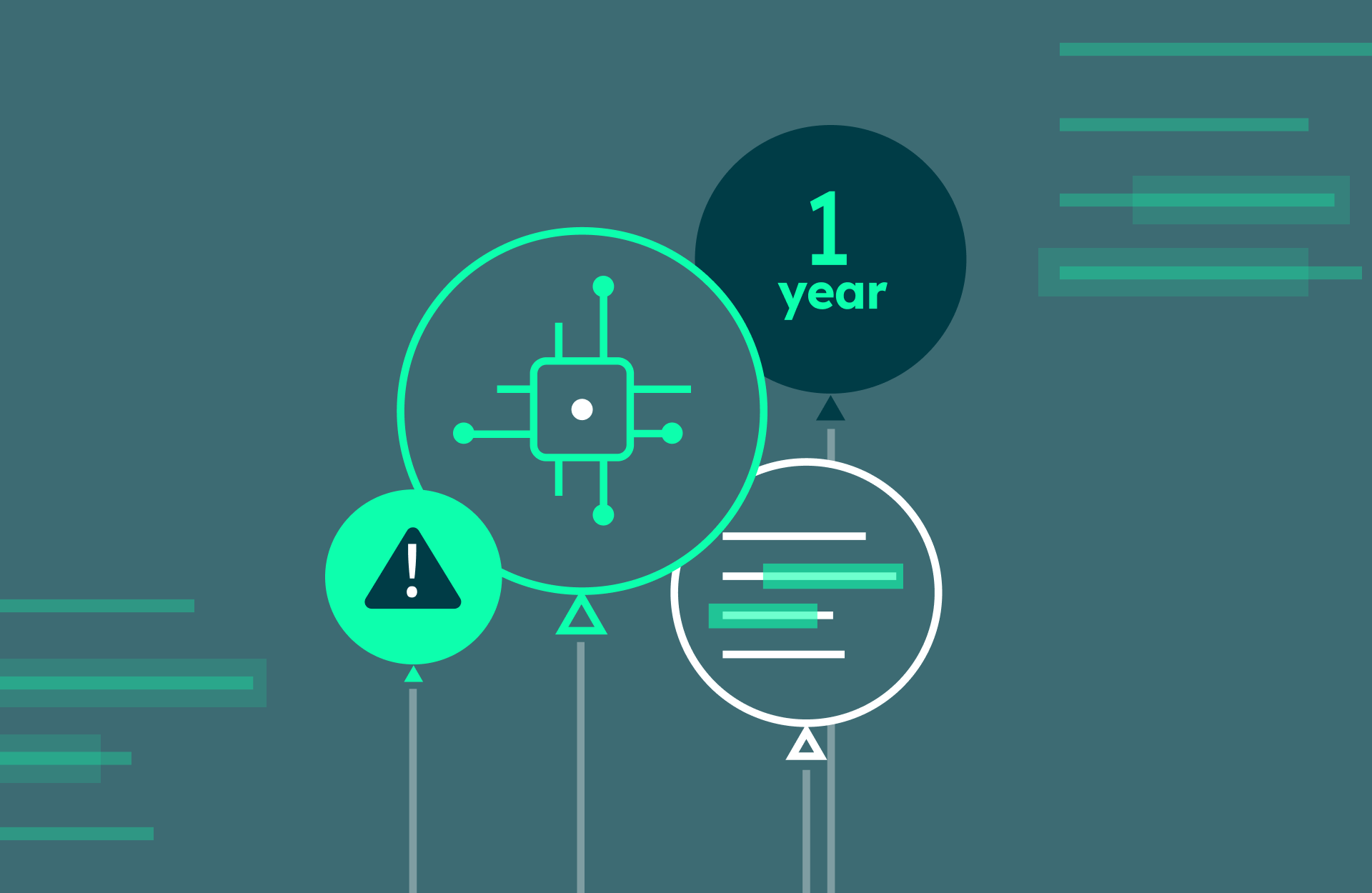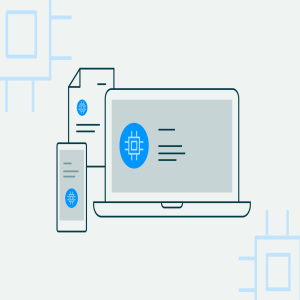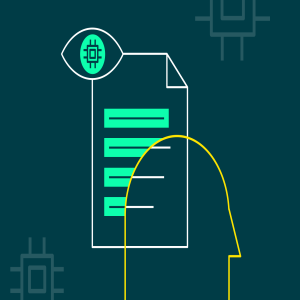In the last 12 months, we’ve experienced a lot of historical moments from the Barbie movie craze to Taylor Swift and Beyonce’s record-breaking concert tours; to the FIFA Women’s World Cup and Twitter’s rebrand to X. However, for many, what happened on Nov. 30, 2022 may not be top of mind - many may not even recognize the date.
One year ago today, Nov. 30, 2022, OpenAI introduced its publicly accessible generative AI writing tool, ChatGPT. It quickly went viral and within five days, the technology generated over one million users and then in its first two months, 100 million.
Chat Generative Pre-Trained Transformer, more commonly known as ChatGPT, is a Large Language Model (LLM) chatbot that enables users to enter prompts in return for human-like responses that can be customized by a variety of factors including tone, length, language, and writing style.
Now, one year later, individuals use the chatbot in a variety of ways: companies use it to automate responses to common customer service questions; healthcare professionals use it to assist with medical recordkeeping; journalists use the technology to brainstorm ideas; and developers use it to help draft video game storylines.
However, the technology didn’t just send shock waves through the professional world. It also impacted education in ways we might not yet fully understand.
A year in retrospect: The educational upheaval sparked by ChatGPT
When I think back to that particular day and the days that followed, I clearly remember the feeling of pure panic that seemed to emanate from the global educational community with whom I work. Educators, administrators, parents, and industry leaders feared a world where they could no longer identify a student’s own work, and questioned AI writing’s impact on the future of original thought, assessment, training and development, and academic integrity.
Hyperbolic headlines filled publications focused on education - and some even in the mainstream media - claiming “the essay was dead” and other equally grim possibilities. Some major school systems and educational institutions even rushed to ban ChatGPT from their campuses.
To say the last 12 months has been hard on educators and institutions would be an understatement. As an educational partner to over 16,000 institutions globally, I saw firsthand how the introduction of ChatGPT impacted the day-to-day life for educators. That’s on top of the remote learning experienced during the global pandemic, frightening levels of documented learning loss, and the ongoing pressures of being overworked and underpaid. We also cannot ignore a mass retirement/resignation wave, combined with historically low rates of professionals entering the education field, creating an intense breeding ground for burn-out.
In short, it’s been tough.
Key learnings from the ChatGPT phenomenon
It’s hard to encapsulate all that we’ve learned in this last year with the launch of ChatGPT. However, even with all the uncertainties and unknowns, here are the top five things that are worth keeping in mind this anniversary:
The question of AI tool usage is not a binary, or right versus wrong.
I wrote about this in a previous blog post, but it is so important it should be mentioned again. AI generative tools are not going away, and an approach that is based on zero tolerance is not only ineffective, but is actually harmful to students. Generative AI will be part of students’ realities - in their academic careers, how they live their lives, and as future employees. Therefore, we are obligated to teach them how to use them effectively. If we don’t, they will enter the workforce at a disadvantage, having lost out on valuable instruction on how to harness their power and understand their limitations. In fact, a follow up study to Tyton’s Time for Class 2023 report, Generative AI in Higher Ed, found that 75% of faculty using AI writing tools believe graduates will need to know how to effectively use AI writing tools to succeed in a professional setting. This is why it’s imperative that we move beyond just AI writing detection. Identifying AI in students’ writing is only one part of a broader, complex and ever-evolving puzzle that incorporates a variety of factors including updated academic policies, clearly established, contextualized expectations, and ongoing discussions with students. This is why, at Turnitin, our guidance is, and has always been, that there is no substitute for knowing a student, their writing style, and their educational background. AI detection, like Turnitin’s AI writing detection feature, are resources, not deciders. Educators should always make final determinations based on all of the information available to them.
While this technology is likely more worrisome for educators than for students, students still need guidance.
I often speak with educators who say they are uncomfortable, unprepared, and hesitant to use the technology. My response - these feelings are perfectly normal. It is still a new, ever-evolving technology. However, we cannot avoid what makes us uncomfortable, because students are using it. The results of Turnitin’s internal data reviews for the presence of AI writing in student work have remained consistent since the launch of Turnitin’s AI writing detection feature in April 2023. At touch points throughout the year, Turnitin found that nearly 10 million of student papers reflect over 20% of likely AI writing, and nearly four million of student papers report between 80 - 100% of likely AI writing. Furthermore, GenAI in Higher Education found that nearly half of students surveyed are regular users of generative AI and 75% of students noted they will continue to use the technology even if faculty or institutions ban it. Because of this, students need educators now more than ever. Students need a learning environment where they learn the technology’s strengths and weaknesses, and how to use it safely and ethically. As educators, we need to focus on what we are really assessing.
If AI writing tools easily fulfill a writing assignment’s requirements, then we need to rethink assessments. We must ask ourselves, “what is it that we’re assessing?” Is it sheer knowledge about a topic? Is it to prove a student’s understanding or application of a process? Is it to synthesize complex ideas? Answering these questions will help shape the most effective learning assessment strategy and design, and make them far less vulnerable to the misuse of AI tools like ChatGPT. To that end, Turnitin has developed a resource that supports educators and academic leaders in navigating the many elements of assessing AI writing detection. This infographic breaks down the different elements that are at play when an instructor is interpreting Turnitin’s AI writing score and suggests ways to start conversations and determine next steps with students. A formative process is where the learning really lives.
This is not a new idea. The truth is, no matter how crafty an educator designs a prompt, a student could still paste it into a tool, like ChatGPT, and get a response out of it. And there will be students who submit what they received from ChatGPT, whether it fits the assignment or not. No effort will completely eradicate the possibility. However, ChatGPT cannot replicate the writing process. If students are brainstorming, drafting and receiving/giving feedback; if they are revising, editing, and polishing; and if they are talking about their content throughout the entire writing development process, then they are learning and doing the work. They aren’t copying the prompt into ChatGPT on the due date at 11:59 pm, and submitting the ChatGPT response. A formative writing process is where the learning really lives. Writing is not dead, and it probably never will be.
This is what the headlines in the early days foretold, and it shook us all. However, it hasn’t happened yet, and it really doesn’t look like it will. You may be thinking,”But Patti, if they can use ChatGPT, why should we have them write?” My answer: writing is not only about the final submission. Yes, writing is a skill that everyone needs, and we need to assess those products. The real power of writing, though, is about the learning. Writing is how humans make sense of new ideas; writing is how we make connections between what we already know and some brand new content. It is how our brains make sense of language, and it is one of the ways we can fix those new ideas into our long-term memory. While the writing product matters, it’s in the learning process where writing does its real magic, and that is why educators won’t walk away from writing as a part of their classroom practice. At the end of the day, students will always need to make meaning, and writing is a critical part of that process.
Uncharted territory: Navigating the future of AI in education
With all that we have learned, it is also important to acknowledge that there is a lot we don’t yet know. We don’t know where AI writing tools will go next or when the next iteration will arrive. Because of that, we don’t know whether the adjustments educators are making now will be permanent or temporary.
For years, as a curriculum supervisor and principal, I, like many educational leaders, told educators that we were preparing students for jobs that didn’t exist in a world we couldn’t imagine. That feels more true than ever, and that can feel frightening and overwhelming. However, I think we can hold onto what we know to be true:
- Students will need educators to help them navigate the new reality.
- Educators and institutions will continue to provide a safe and secure place to learn, practice, take chances, and grow.
- Educators will need trusted partners who understand their needs and those of their students.
Here’s our promise to you: Turnitin will be a trusted partner, ready to support you as each new development emerges. We will continue to listen to your needs and respond when you emphasize your students’ needs. We will continue to invest in education and educators.
Turnitin was a partner in providing compensation to conduct Tyton’s Time for Class 2023 and GenAI in Higher Education reports.






